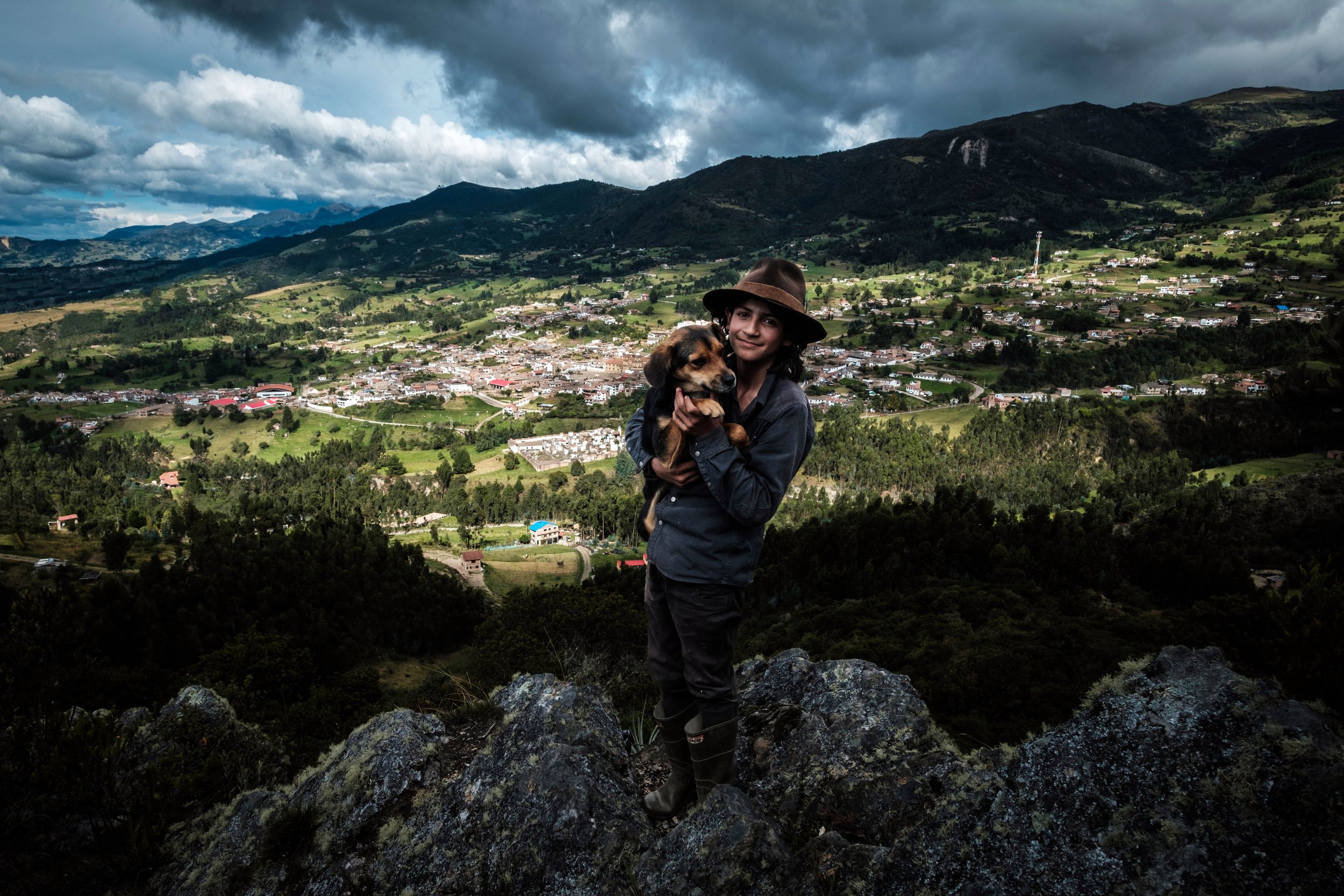Monguí
At A Glance
Founded: 1601
Population: 4,986
Distance from Sogamoso: 19.7 km / 12.2 miles
Demonym: “Monguiseño, -a”
The picturesque town of Monguí is famous for its well-preserved cobblestone streets, whitewashed facades, and colonial architecture. As part of the Colombian Heritage Villages, Monguí has been voted “Most Beautiful Town of Boyacá” in recent years. The entire town has embraced a Christmas color palette, prominently featuring greens with vibrant red and gold accents. Monguí also serves as one of the entry point for Páramo Ocetá, a high-altitude ecosystem found in the northern Andes of Colombia. Beyond its historical allure, the town of Monguí is renowned for its mastery in crafting footballs, a tradition that began in 1930 and has earned the town recognition as the ‘Capital of Colombian Soccer Balls’.
Pre-Colonial History
The town’s name "Monguí" is rooted in the Chibcha language, spoken by the Muisca people who inhabited the region before Spanish colonization. It translates as “The Wife’s Bath,” although the exact meaning has variations. In pre-colonial times, the town was inhabited by the Monguíes, and the region was also home to the Samoes or Sancas tribe. In 1555, the Franciscan missionaries arrived to evangelize the indigenous population which began the onset of Christianization in Monguí.
Páramo de Ocetá
Colombia is home to 40% of the world’s páramos. And Páramo de Ocetá is widely regarded as the most beautiful. Páramos are characterized by its unique ecosystem, which includes Andean grasslands, mosses, and frailejónes plants. Frailejónes are a type of evergreen plant endemic to the Andean highlands, known for their distinctive appearance with tall stems and rosettes of leaves. They grow less than a centimeter per year and can live for hundreds of years. Páramos serve as a vital water source for surrounding communities and supports a diverse range of flora and fauna, including endemic species found only in this region. Due to its ecological significance and rich biodiversity, the Páramo de Ocetá is protected as a natural reserve in Monguí. It attracts visitors for its stunning landscapes, hiking opportunities, and the chance to experience the unique Andean ecosystem up close.
The Basilica and Convent
The Basilica of Our Lady of Monguí, constructed between 1694 and 1760, stands as a testament to the town's religious heritage. This Romanesque-style church houses the revered image of the Virgin Mary and features works by the renowned painter Gregorio Vasquez de Arce y Ceballos. The Basilica is a significant cultural and religious landmark, drawing pilgrims from far and wide.
The stones used for the construction of the church and convent were transported across El Puente Calicanto, a famous bridge and historical monument crossing the Morro River. Built by the Spaniards, the masonry of the bridge was made from a mixture of lime, sand, molasses and beef blood.
The Virgin of Monguí
The Virgin of Monguí is a revered painting of the Virgin Mary, said to have arrived in the New World as a gift from King Philip II of Spain. When his father, King Charles I of Spain, retired from his throne, he went to the Monastery of Yuste in the Spanish Province of Cáceres to prepare for death. He went into the Monastery looking for painted works of the Virgin Mary to send to the New World, in order to express gratitude to indigenous leaders for their loyalty to the Spanish Crown.
In 1558, King Philip II, his son and successor, sent two paintings: one of St. Martin, which was intended for the leader of Monguí, and another of the Holy Family, destined for Sogamoso. Despite the markings, confusion arose, leading to the reversal of destinations. In response to the error, the inhabitants of Sogamoso protested and demanded the exchange of paintings. According to legend, the paintings inexplicably returned to their original places the following day, believed to be a result of “divine intervention”. Since then, the painting has remained in Monguí, becoming an integral part of its history. The Church of Monguí has been granted the status of a Basilica, and the “miracle” associated with this painting has become a focal point of devotion and pilgrimage.
Fábricas de Balones
In the 1930s, the town of Monguí was forever changed by the vision of two brothers, Froilán and Manuel Ladino. In the main square, a stone monument with a plaque serves as a testament to their enduring legacy of the soccer ball industry. The first hand-sewn ball was officially registered in Monguí in 1938, several years after the Ladinos crafted the molds and acquired all the necessary equipment to produce soccer balls. Froilán Ladino shared his knowledge with a group of people he called 'the twelve apostles', who would later pass it on to their descendants and promote the culture of the soccer ball industry that exists today.
In the 1970s, the production of soccer balls in Monguí was recognized as the best small industry in Boyacá. However, the industry has been significantly impacted by the modernization of the 21st century, and the importation of balls from countries like China and Pakistan has challenged the manual sewing process. A tradition going back for 80 years, the town once produced up to 25% of the nation’s balls.
Monguí in the Present
Renowned for its football manufacturing and situated near natural wonders like the Páramo de Ocetá, Monguí continues to enchant visitors with its rich history and picturesque charm.
Here are our artisans that call Monguí home:









